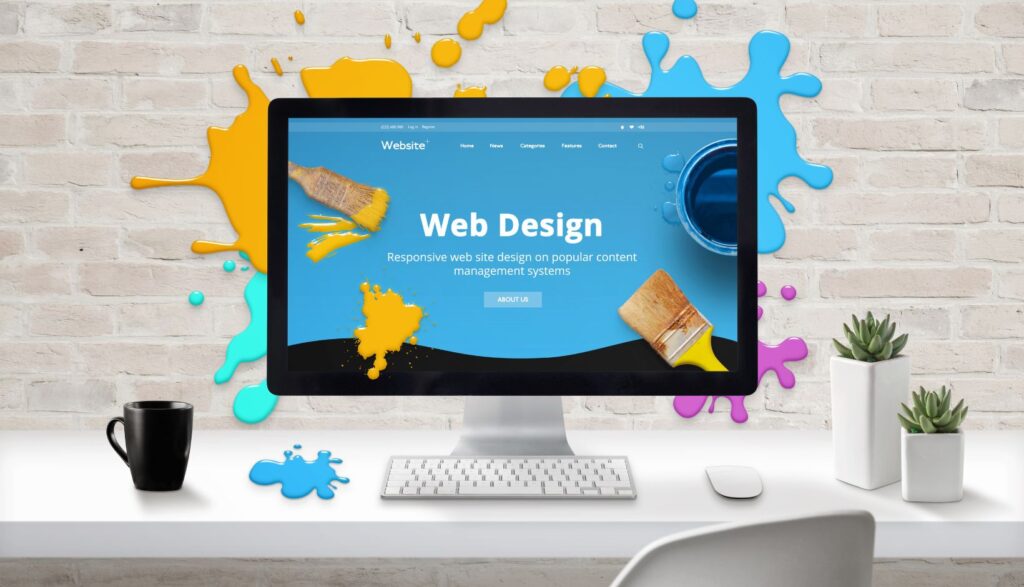
Have you ever landed on a website that just didn’t feel right?
Maybe the layout was confusing, the text was hard to read, or the page took forever to load. These are all common web design mistakes that can drive visitors away.
Your website is one of the most important digital assets for your business. It represents your brand, builds trust, and helps convert visitors into customers.
But if your website has poor design elements, it could be hurting your brand instead of helping it.
A well-designed website keeps users engaged and encourages them to take action, while a poorly designed site can make users leave within seconds.
If you want to provide the best experience for your visitors and strengthen your brand, here are 10 common web design mistakes you should avoid.
Why Web Design Matters for Your Brand
Your website is often the first interaction a customer has with your business. A well-structured, visually appealing, and easy-to-navigate website can leave a lasting impression and encourage visitors to explore more.
On the other hand, a poorly designed website can make your business appear unprofessional, reducing credibility and driving potential customers away.
A good web design should:
- Enhance the user experience by making navigation easy.
- Build trust and credibility with a professional layout.
- Improve conversion rates by guiding visitors toward action.
- Support search engine optimization (SEO) efforts.
Now, let’s explore the common web design mistakes leading agencies, like Made Simple Media in London, strongly recommend avoiding to prevent harm to your brand.
Cluttered and Overcomplicated Layout
A cluttered website can overwhelm visitors and make navigation difficult. If your homepage is filled with too many elements—buttons, text, pop-ups, and images—it can be hard for users to focus on what’s important.
A clean and simple design makes it easier for visitors to understand your message and take action. However, with logosmarketing your website can be simplified.
Slow Loading Speed
Website speed plays a crucial role in user experience and search engine ranking. If your website takes more than a few seconds to load, visitors may leave before even seeing your content.
Slow loading times can be caused by large image files, excessive plugins, or unoptimized code.
To improve your website’s speed:
- Compress large images before uploading them.
- Minimize the use of unnecessary plugins and scripts.
- Use a reliable web hosting provider.
A fast-loading website not only improves user experience but also boosts your search engine ranking, making it easier for people to find your brand online.
Poor Mobile Responsiveness
More than half of all web traffic comes from mobile devices. If your website doesn’t adjust properly on different screen sizes, you risk losing a large number of visitors.
A responsive web design includes:
- A mobile-friendly menu that is easy to navigate.
- Text and images that scale properly on smaller screens.
- Buttons and links that are easy to tap.
A mobile-responsive design helps you reach more users and provides a seamless browsing experience across all devices.
Difficult Navigation
Users should be able to find what they need on your website quickly and effortlessly. A confusing navigation menu with too many links can overwhelm visitors and make them leave.
To create an easy-to-navigate website:
- Keep your menu simple with clear labels.
- Use a search bar for quick access to content.
- Avoid too many dropdown menus.
A well-organized website helps visitors stay engaged, reducing bounce rates and increasing the chances of conversions.
Weak Call-to-Action (CTA)
Your website should guide users toward a specific action, such as signing up for a newsletter, requesting a quote, or making a purchase. A weak or missing call-to-action can result in lost opportunities.
A strong CTA should be:
- Visible and easy to understand.
- Action-oriented, using phrases like “Get Started,” “Sign Up Now,” or “Learn More.”
- Placed strategically on key pages, such as the homepage and landing pages.
An effective CTA encourages visitors to take the next step, improving engagement and conversions.
Poor Readability and Font Choices
Readable text is one of the most important aspects of a well-designed website. If your text is too small, uses an overly decorative font, or has poor color contrast, it can make reading difficult.
To improve readability:
- Use simple, professional fonts that are easy to read.
- Ensure there is enough contrast between text and background.
- Keep paragraphs short and use headings to break up content.
A well-structured and readable website makes it easier for users to absorb information and stay engaged.
Ignoring SEO Best Practices
Search Engine Optimization (SEO) helps your website rank higher on search engines, making it easier for people to find your business.
Some essential SEO practices include:
- Use relevant keywords naturally in your content.
- Writing unique and informative meta descriptions.
- Optimizing images with descriptive file names and alt text.
By implementing SEO best practices, you increase your chances of reaching a wider audience and improving your website’s performance.
Lack of Consistent Branding
Your website should reflect your brand’s identity. If your colors, fonts, and design elements are inconsistent, it can confuse visitors and weaken your brand’s credibility.
A strong brand identity includes:
- Using the same color scheme and fonts across all pages.
- Maintaining a consistent tone and style in your content.
- Adding your logo in a prominent position.
A well-branded website helps build trust and makes your business more recognizable. Additionally, to brand your website you can take help from https://logosmarketing.net/.
Auto-Playing Media
Auto-playing videos or music can disrupt the user experience and drive visitors away. Many users find it frustrating when they land on a page and suddenly hear unexpected sounds.
Instead of auto-playing media:
- Allow users to choose when to play a video or audio file.
- Provide clear controls for muting or pausing content.
- Use captions for videos to make them accessible.
Giving users control over media improves their experience and keeps them engaged.
Missing Contact Information
Visitors need an easy way to contact your business. If your contact details are difficult to find, potential customers may leave without reaching out.
A well-placed Contact Us page should include:
- A phone number and email address.
- A contact form for inquiries.
- Links to social media profiles.
Providing clear and accessible contact information helps establish credibility and makes it easier for customers to reach you.
How to Fix These Mistakes
If your website has any of these issues, there’s no need to worry—many of them can be fixed with simple adjustments. Start by analyzing your website’s design and performance to identify problem areas.
Key Improvements to Consider:
Issue Solution
Slow Loading Speed Compress images, reduce scripts, and use a good host.
Poor Mobile Responsiveness Use a responsive design that adapts to all devices.
Difficult Navigation Simplify the menu and use clear labels.
Weak CTA Make CTAs more visible and action-oriented.
Auto-Playing Media Give users control over video and audio playback.
Conclusion
A well-designed website not only attracts visitors but also keeps them engaged and encourages them to take action. Avoiding these common web design mistakes will help improve user experience, strengthen your brand, and boost your online success.
By continuously improving your website and staying updated on best practices, you can ensure that your site works in favor of your business rather than against it.












